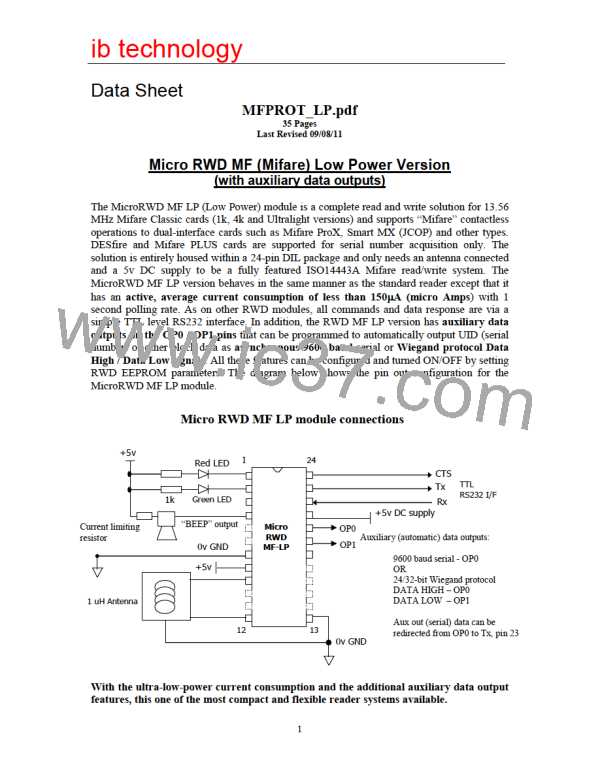ib technology
3) Host commands received and processed.
When the RWD receives commands from the host computer, the polling rate increases
to allow a quick response to the command. This means that commands such as READ
or WRITE BLOCK can be repeated quickly and the large amounts of data read from,
or written to the card as fast as possible.
The polling cycle delay in this case is effectively the minimum, so the RWD responds
to the host command immediately after the RF communication is complete.
Example a) NO card present, single CARD UID (0x55) command received.
Note: at 9600 baud serial communication rate, a single byte is received or transmitted in
approximately 1mS (104µS per bit). If no commands follow then the polling rate reverts
back to the stored parameter value as in (1).
Command byte received +
6mS CTS timeout
Not to scale
TTL levels
5v
CTS
0v
Polling cycle period set by EEPROM
parameter (4ms to 8 seconds)
Polling cycle
repeats
7ms
6ms
10ms
1
5v
0v
RWD
RX
2
(1ms) Command byte received
5v
0v
RWD
TX
3
Acknowledge byte reply
(1ms)
1
2
3
Host waits for CTS falling edge then sends command byte.
RWD processes command, RF turned ON for brief period to check if card present.
RWD then replies with acknowledge byte (+ data).
Example b) Mifare card in field, single CARD UID (0x55) command received.
Command byte received +
6mS CTS timeout
TTL levels
5v
Not to scale
CTS
0v
Polling cycle
repeats
100ms polling delay
(card still present)
7ms
23ms
6ms
1
5v
0v
RWD
RX
2
(1ms) Command byte received
5v
0v
RWD
TX
3
Acknowledge byte + 7 byte serial number reply
8ms
15ms
6

 RFSOLUTIONS [ RFSOLUTIONS.LTD ]
RFSOLUTIONS [ RFSOLUTIONS.LTD ]